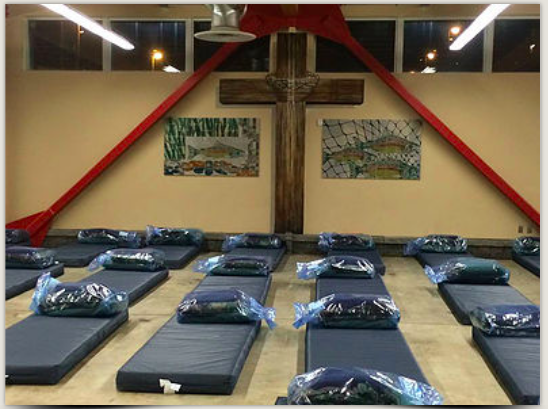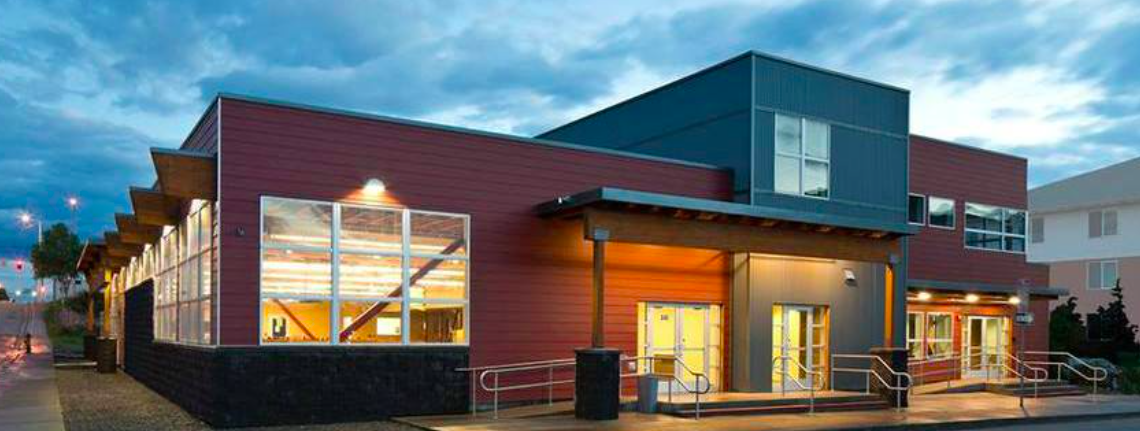IT’S NOT JUST ABOUT BATHROOMS ANYMORE
This week, ballots are in the mail to Anchorage voters, and among the questions they’ll be asked is Prop. 1: Whether Anchorage should roll back aspects of its “equal access to bathrooms and locker rooms” statute that currently allows biological men to use women’s facilities, where women and girls are typically found in a state of undress or partial undress. The following story is an update to an earlier story broken by Must Read Alaska about the statute being used to demand entry to a women’s shelter by a transgendered man.)
On March 15, the Anchorage Equal Rights Commission may take up a complaint made by a transgendered individual who attempted to gain entry into a women’s shelter, where women sleep on the floor, elbow to elbow.
The man, who is possibly living as a woman (although that is unclear in court records), was denied entry and filed the complaint with the commission within days of being denied shelter for the night.
By the time it meets, the commission will already be in receipt of a letter from the Downtown Hope Center, which operates both the Downtown Soup Kitchen during the day, and a shelter for abused, homeless women at night.
The charity has asked the commission to cancel the hearing. In any event, the charity has no intention of showing up.
HOPE CENTER RESPONDS
Through the charity’s lawyer, the Downtown Hope Center says the commission simply has no authority over the allegation of discrimination by Samantha/Timothy Paul Coyle against the Hope Center. Coyle said that his equal rights were violated in late January, when he was turned away twice by the shelter.
“”Hope Center did not violate AMC 5.20.050 with respect to Coyle,” the charity responded to the complaint. Hope Center is not a public accommodation within the meaning of AMC 5.20.010 and AMC 5.20.050, the organization wrote.
“Second, Hope Center did not discriminate against Coyle on the basis of gender identity. Hope Center has permitted Coyle to receive food service and lavatory and shower access in the past without incident. However, on two occasions Coyle, who has a criminal record involving violence and the use of a deadly weapon, was turned away by Hope Center.
“Coyle was turned away initially because he presented himself to Hope Center under the influence of alcohol after having been ejected and banned from the Brother Francis Shelter for fighting and being under the influence of alcohol.
“Next, Coyle was turned away when he returned the following day at a time when Hope Center was not open for receiving homeless individuals for shelter. On neither occasion was Coyle turned away because of his gender identity.
“Third, Hope Center has First Amendment rights to religious liberty and association that permit it to operate exclusively so as to provide charitable shelter to abused and battered women, and to exclude biological males from its abused and battered women’s shelter.”
[Read: Transgender files complaint against women’s shelter]
The letter from Hope Center to the commission went on to state the mission of Hope Center, and its history and operation.
“Hope Center is a religiously affiliated, private non-profit IRS § 501(c)(3) organization that provides (1) food and showers to homeless individuals in the downtown Anchorage, Alaska, area; and (2) shelter to homeless abused and battered women in the downtown Anchorage, Alaska, area. In addition to providing charitable food and shelter to homeless individuals, Hope Center maintains and operates a church on its property.”
The organization explained to the commission that it originally operated just a soup kitchen, but then expanded to help the local Brother Francis Shelter, which is operated by Catholic Social Services. Brother Francis was running out of room for homeless people, so Hope enter agreed to open a shelter just for abused and battered women, mainly to deal with the overflow at Brother Francis.
Hope Center now takes into its shelter both an overflow of abused and battered women from Brother Francis, as well as some abused and battered women who appear at Hope Center directly. Hope Center has the ability to provide shelter to as many as 50 abused and battered women a night.

“Following dinner, abused and battered women who have signed up and who qualify—e.g., no one is allowed to stay if they are inebriated or high or if they present a safety threat to others—are permitted to stay for the night, based upon space availability and priority of sign-up time. Those who stay for the night are given mats, along with a bag of blankets and a sheet so that they can sleep on the floor in the one large open room. Showers and laundry are also provided to those who have signed up and qualified to stay the night, and breakfast is provided in the morning to those who stayed the previous night.”
The organization does not house biological men because “this would traumatize and present unreasonable safety risks for the abused and battered women who are admitted for overnight shelter. Many of the abused and battered women who stay at the Hope Center have come out of or have been referred by the AWAIC Shelter because they have experienced domestic or other forms of violence and abuse. Also, many of the women who the Hope Center shelters have escaped the horrendous conditions of sexual exploitation and human trafficking. It would be wholly irresponsible and potentially dangerous for Hope Center to house biological males in its shelter overnight with the population of abused and battered women who stay at the shelter.”
Further, the organization has no security detail to protect women other than the door that keeps harmful people out.
“Because of the building’s open design and high ceiling, it is not possible for Hope Center to segregate a portion of the shelter for biological males,” the organization wrote.
“In any event, housing biological males in close proximity to abused and battered women, some of whom have escaped from human trafficking, would be cruel, possibly negligent, and virtually criminal. Also, Hope Center would be opening itself up to substantial civil liability if a biological male were to harm, rape, or, God forbid, kill one of the abused or battered women in the shelter.
The letter included a request that the hearing be cancelled and the complaint dismissed.
Finally the charity threw down the gauntlet, closing with this statement:
“Hope Center will not be attending the March 15, 2018, fact-finding conference. In the event that AERC determines to proceed with this matter, Hope Center intends to file a Motion to Dismiss on the basis that Hope Center is not a public accommodation.”
It’s a case that has the makings of a lawsuit that could go all the way to the Supreme Court.

I have been looking for another charity to donate money and help out. I just found it. The Hope Center is awesome – they help women, and now this, standing up for common sense!!!
Thanks for the great article!!!
Hope center is a wonderful facility, with so many good programs to help people out!
I have experience and great empathy for parents of transgender kids—and for those young kids who early in life, often well before puberty, find that their brains do not match up with their genitals. These kids are not mentally ill. The media will inform us about the nasty incidents. But these parents and kids need positive role models of transgenders to balance the negatives and the battles that they will encounter as they try to make a good and productive life for themselves. See National Geographic, January 2017, for an indepth discussion.
Excellent article Suzanne! Now we know what actually happened.
Given the information provided above and assuming that the Commission received that information there is no basis for any action against this Charity.
Given this event and maybe others like it, it is understandable why folks would vote in favor of proposition 1.
I am fairly certain that the vast majority of men who come to believe that their gender identity is contrary to their genetic composition are decent people, But I don’t understand why the City want to expose women to the few who would harm them or their children?
Is it really necessary to achieve some sort of equality while exposing woman to some sort of risk?
I am an individual who made the choice to live with and walk beside the homeless people to experience the struggles they endure.
My concern is WHY was the Hope Center the only target?
From my own experiences with homeless services at the BROTHER FRANCIS & ANCHORAGE GOSPEL RESCUE MISSION shelters, they will NOT allow Samantha the use of their womens facility services.
The AWAIC shelter had also turned down Samantha for their womens services they provide.
WHY wasn’t a complaint filed against any of these other organizations?
Comments are closed.